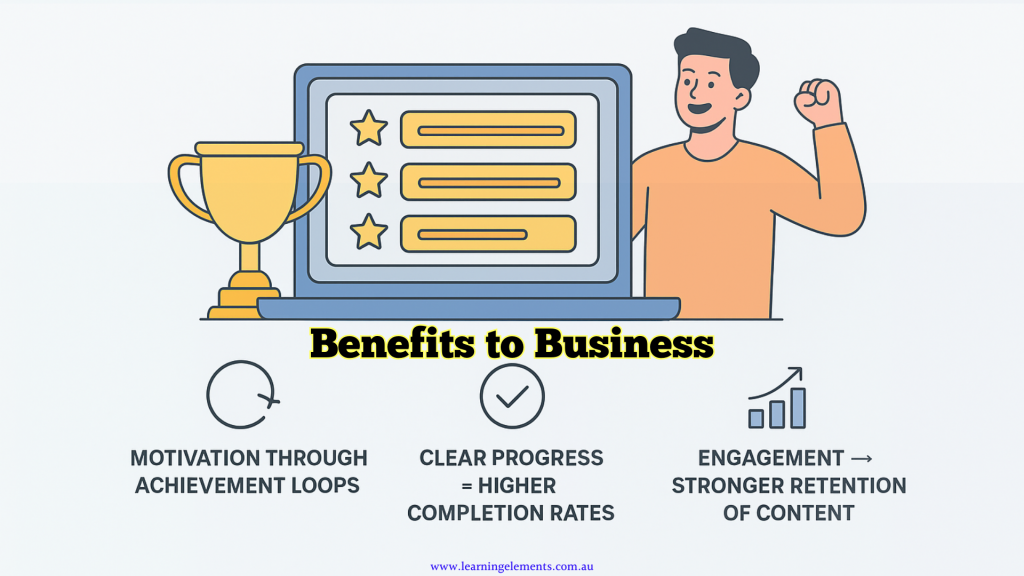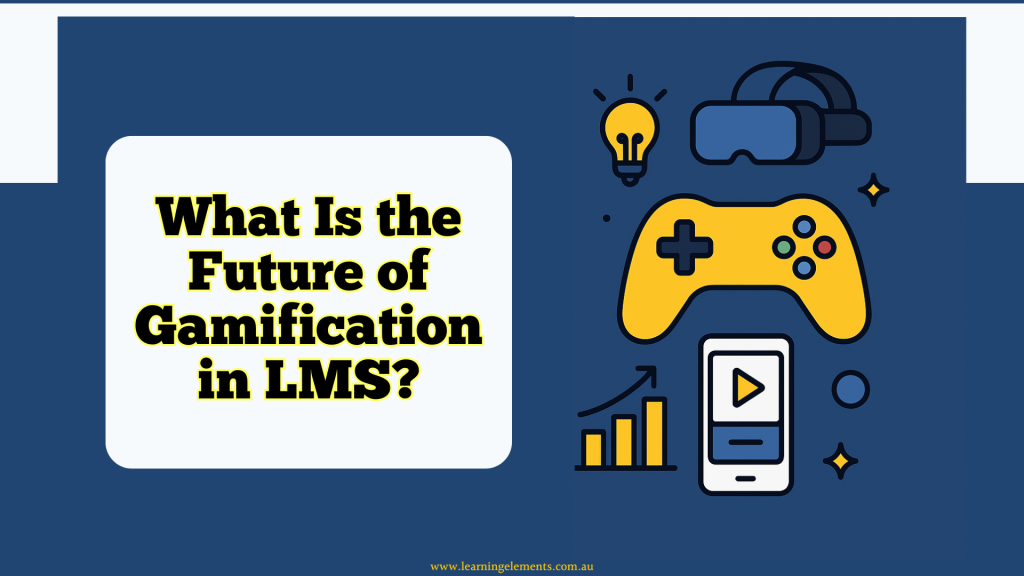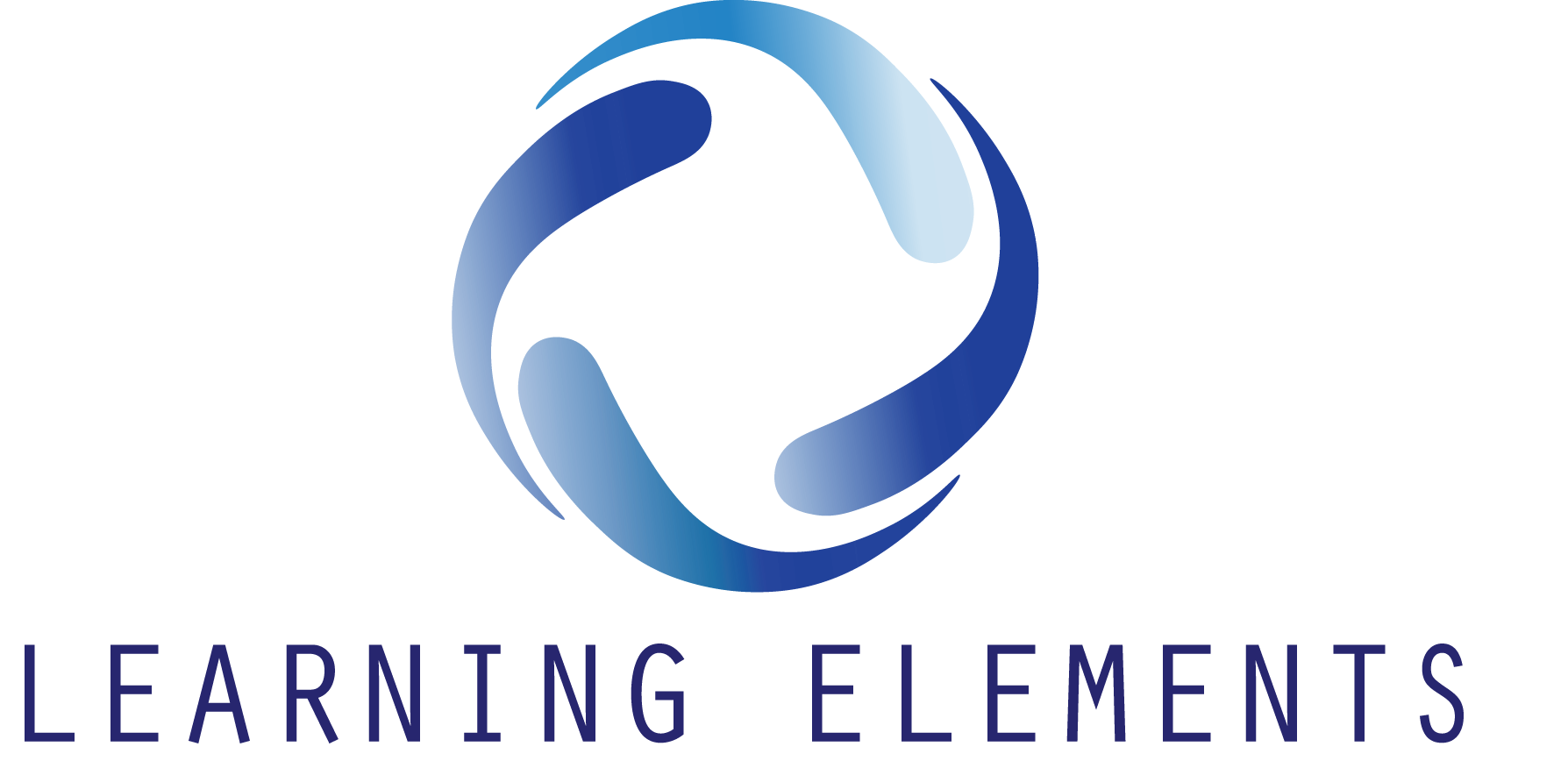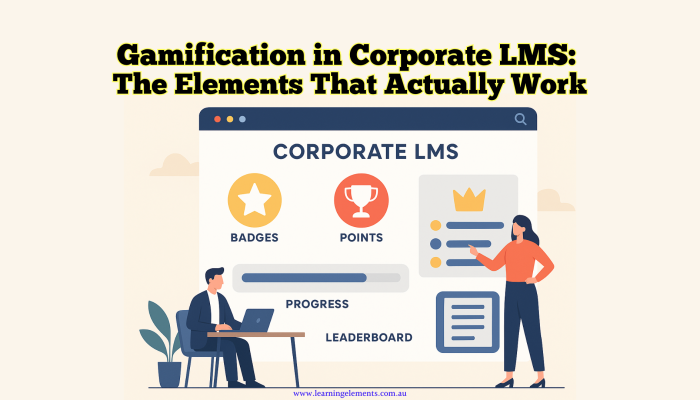Gamification in Corporate LMS: The Elements That Actually Work
Gamification in corporate LMS has become one of the most effective ways to transform learning from a box-ticking exercise into an engaging experience that delivers real results. By applying proven game mechanics inside the learning environment, businesses can motivate employees, encourage healthy competition, and drive higher completion rates. But while gamification is powerful, not every element delivers equal impact. The key is knowing which features actually work—and how to align them with your training goals.
Why employees disengage from mandatory training (and how game mechanics solve it)
Mandatory training often gets a bad reputation. For many employees, it feels like a chore—content-heavy, disengaging, and disconnected from their daily work. As a result, completion rates plummet, knowledge retention suffers, and businesses struggle to achieve training goals.
What Gamification Really Means in LMS
Gamification isn’t about turning learning into a video game. It’s about using game-inspired mechanics to drive behaviour and engagement.
Key elements include:
- Points, badges, leaderboards, and progress bars – Simple yet effective motivators that track progress and celebrate achievement.
- Social recognition & peer competition – Employees gain a sense of accomplishment when their efforts are acknowledged publicly, sparking healthy competition.
These features tap into natural human psychology—our desire for recognition, progress, and mastery.
Beyond these key elements, other motivators of gamification can add even more depth to the learning experience, such as:
- Levels & unlockable content – Keep learners curious and motivated by revealing content step by step.
- Storytelling & narratives – Frame training as a journey or mission, making it more memorable.
- Scenario-based challenges – Provide realistic decision-making opportunities to apply knowledge.
- Rewards & incentives – From digital certificates to tangible perks, reinforcing achievement.
- Instant feedback loops – Keep learners engaged by showing them the impact of their choices in real time.
Why Gamification in Corporate LMS Matters
Gamification in corporate LMS platforms bridges the gap between mandatory training and employee motivation. Instead of treating compliance or onboarding as box-ticking exercises, it turns them into experiences employees want to complete. This shift not only improves training results but also helps organisations demonstrate ROI from their learning programs.

Gamification in Corporate LMS: Key Benefits to Business
Gamification in an LMS doesn’t just make learning fun—it drives tangible business outcomes. When designed with the right mechanics, it connects learner motivation to organisational goals, creating a direct line between training and measurable results.
Motivation through achievement loops
When learners earn points or unlock levels, it creates a feedback loop that keeps them motivated to continue. This sense of progression taps into human psychology—people are naturally drawn to challenges and rewards. For example, completing one module unlocks the next, sparking curiosity and satisfaction. Over time, these small achievements build momentum, turning what feels like a mandatory task into an enjoyable challenge that learners actively want to complete.
Clear progress = higher completion rates
Visual indicators like progress bars help employees see how far they’ve come and how close they are to completing modules. This simple mechanism creates clarity and reduces overwhelm. Instead of viewing training as a long, endless obligation, learners can track their journey step by step. Progress tracking also encourages return visits, as people are motivated to “finish what they’ve started.” In corporate settings, this directly translates to higher completion rates across compliance modules, onboarding programs, and professional development courses.
Engagement → stronger retention of content
When learners are engaged, they retain knowledge more effectively. That means training isn’t just completed—it sticks. Gamified features like badges, scenario challenges, and quick quizzes encourage active participation, which research shows is more effective than passive reading or watching. The result is not only better short-term understanding but also improved long-term retention, ensuring employees can apply their learning in real work situations.
These outcomes highlight why gamification in corporate LMS is more than a trend—it’s a practical strategy for building a culture of continuous learning and driving measurable business success.
Improved Knowledge Application
Gamification often includes scenario-based challenges or simulations, which help learners apply knowledge in realistic contexts, not just recall facts. For example, a sales training module might include a gamified role-play where employees choose the best responses to a customer scenario. These interactive exercises mirror real-world challenges, giving employees the confidence to act correctly when similar situations arise on the job. This bridges the gap between theory and practice.
Performance & Productivity Gains
Linking gamified training to KPIs (sales, compliance, safety, etc.) can show measurable improvements in performance outcomes. For instance, gamified compliance training ensures employees understand regulations thoroughly, reducing costly errors. In sales, leaderboards tied to completed learning modules often correlate with higher deal closures. By tying training outcomes directly to job performance, businesses can demonstrate ROI from their LMS investment while employees feel their training is relevant and impactful.
Data & Insights for Managers
Gamification provides rich data on learner behaviours (e.g., who engages most, which modules create bottlenecks), allowing training teams to refine programs. Managers can identify top performers, spot at-risk learners who may need extra support, and understand which content delivers the highest impact. This level of insight transforms training from a “tick-box” exercise into a continuous improvement cycle, where data-driven decisions make learning strategies more effective over time.
Additional Advantages
- Better Learner Satisfaction & Learning Culture – Gamification creates fun, accomplishment, and a stronger culture of continuous learning. Employees are more likely to view training positively when it feels interactive, rewarding, and aligned with their career growth.
- Peer-to-Peer Collaboration & Social Learning – Leaderboards, team challenges, and recognition features encourage collaboration and knowledge sharing. Employees compete, celebrate wins together, and build stronger connections—turning training into a shared experience instead of an isolated task.
- Reduced Training Costs Over Time – By improving completion and retention, companies spend less on retraining or repeat sessions. The efficiency of gamified learning means employees need fewer refreshers, saving both time and money while still maintaining a highly skilled workforce.
Discover how gamification drives better training results and claim your FREE 30-minute consultation.
Common Pitfalls
Like any strategy, gamification can fail if not implemented carefully.
- Over-gamifying (novelty fades) – Too many gimmicks or meaningless rewards can make gamification feel forced.
- Ignoring alignment with business goals – Points and badges mean little if they don’t connect to desired outcomes like compliance, performance, or skills growth.
- Forgetting learner diversity – What motivates one employee may not motivate another. Effective gamification requires variety and inclusivity.
- Lack of measurement & iteration – Without tracking KPIs (completion, performance improvements, satisfaction), gamification efforts risk stagnating. What gets measured can be refined.
- Neglecting change management – If employees and managers aren’t introduced to gamification properly, some may see it as “childish” or distracting. Preparing stakeholders ensures smoother adoption.
The key is balance—gamification should always serve learning objectives, not distract from them. When implemented strategically, gamification in corporate LMS avoids these pitfalls and delivers lasting impact.
Best Practices for Implementing Gamification in LMS
Avoiding pitfalls is only half the equation—success with gamification requires a thoughtful approach. Here are some best practices to ensure your investment delivers lasting impact:
- Start small, scale gradually – Pilot gamification in a single training program before rolling it out company-wide. This allows you to gather feedback and refine mechanics.
- Align with KPIs – Tie game mechanics to measurable business outcomes like compliance completion, sales growth, or customer service scores.
- Keep it meaningful – Rewards should feel relevant and connected to real skills or achievements, not just points for logging in.
- Measure & adapt – Track metrics such as completion rates, learner satisfaction, and performance improvements to identify what works best.
- Refresh regularly – Update challenges, rewards, and leaderboards periodically to prevent fatigue and keep learners engaged.
By following these practices, organisations can ensure gamification remains engaging, purposeful, and sustainable over time.
Practical Examples
Gamification can be tailored to different contexts within corporate training. For instance:
- Compliance training with levels – Employees advance through stages, unlocking content as they demonstrate knowledge.
- Sales training with rewards for closing modules – Sales reps earn badges and points for completing training that directly relates to their performance.
- Onboarding journeys gamified with progress milestones – New hires unlock rewards as they master different stages of onboarding.
- Leadership & soft skills development – Gamified simulations where managers practice decision-making in challenging scenarios, earning points for collaborative leadership choices.
- Customer service training – Role-play challenges that reward employees for handling virtual customer interactions effectively, reinforcing service standards.
These examples demonstrate how gamification, when tied to outcomes, reinforces skills that matter most to the business.
Learning Elements’ Role
At Learning Elements, we don’t just add points and badges—we design meaningful gamification aligned to business outcomes.
Our role includes:
- Analysing your training needs and identifying where gamification can have the most impact.
- Designing game mechanics that drive motivation while supporting organisational goals.
- Implementing and monitoring gamified learning journeys to ensure lasting engagement.
- Providing ongoing support & optimisation by monitoring learner feedback and updating game mechanics to keep engagement fresh and relevant.
- Integrating with existing systems, ensuring gamification works seamlessly with the client’s LMS and reporting tools.
Let’s build engagement into your LMS strategy

Future of Gamification in Corporate LMS
Gamification is evolving beyond points and badges into a more personalised, immersive experience. Emerging trends are shaping the next generation of corporate learning:
- AI-driven personalisation – Intelligent algorithms will adjust challenges, rewards, and pacing based on each learner’s performance and preferences.
- Adaptive learning journeys – Employees will progress through gamified training paths that respond dynamically to their skills, ensuring no two journeys are identical.
- Integration of VR and AR – Immersive simulations will allow learners to “step into” real-world scenarios, making gamified training more experiential and memorable.
- Data-powered motivation – Advanced analytics will not only measure performance but also predict disengagement and trigger re-engagement strategies.
- Blended gamification – Combining digital game mechanics with in-person workshops and team challenges will bridge the gap between virtual learning and real-world collaboration.
These innovations signal that gamification in corporate LMS is not a passing trend—it’s becoming a strategic tool for building adaptive, future-ready learning cultures.
FAQs
- What is the difference between gamification and game-based learning?
Gamification adds game mechanics (like points, rewards, leaderboards) to non-game activities such as LMS training. Game-based learning, on the other hand, uses full games as the training itself. - Does gamification actually improve business outcomes?
Yes. Gamification improves learner engagement, boosts completion rates, and enhances knowledge retention—all of which translate into measurable business results. - Will gamification work for compliance training?
Absolutely. Gamified levels, badges, and quizzes can make compliance modules less tedious and more interactive, encouraging employees to complete them on time. - Is there a risk of employees focusing only on “winning” instead of learning?
If designed poorly, yes. That’s why it’s important to align rewards with learning goals—so the game mechanics reinforce skills, not just competition. - How hard is it to integrate gamification into an existing LMS?
Many modern LMS platforms already support gamification features. Where they don’t, add-ons and plugins can often fill the gap. With expert support, integration is smooth. - What industries benefit most from gamification?
While all industries can benefit, gamification is especially effective in sales, onboarding, compliance-heavy sectors, and customer service training. - How do you measure success in gamified training?
By tracking metrics like course completion rates, learner satisfaction scores, knowledge retention tests, and performance KPIs tied to training outcomes.
Conclusion
Gamification in corporate LMS platforms isn’t about adding superficial badges or leaderboards—it’s about designing meaningful experiences that spark motivation, sustain engagement, and drive measurable business results. When implemented strategically, gamification transforms mandatory training into an opportunity for growth, making learning something employees genuinely want to complete and remember.
For organisations, this means faster skill development, improved compliance, and a workforce that’s more capable and confident. But the real value lies in aligning gamification with your business goals—something that requires more than just turning on a feature.
At Learning Elements, we specialise in crafting gamification strategies that go beyond the hype. From analysing your training needs to designing tailored achievement systems, we ensure your LMS doesn’t just look engaging—it delivers results that matter.
Ready to make learning engaging and outcome-driven? Let’s design a gamification approach that truly works for your business.

